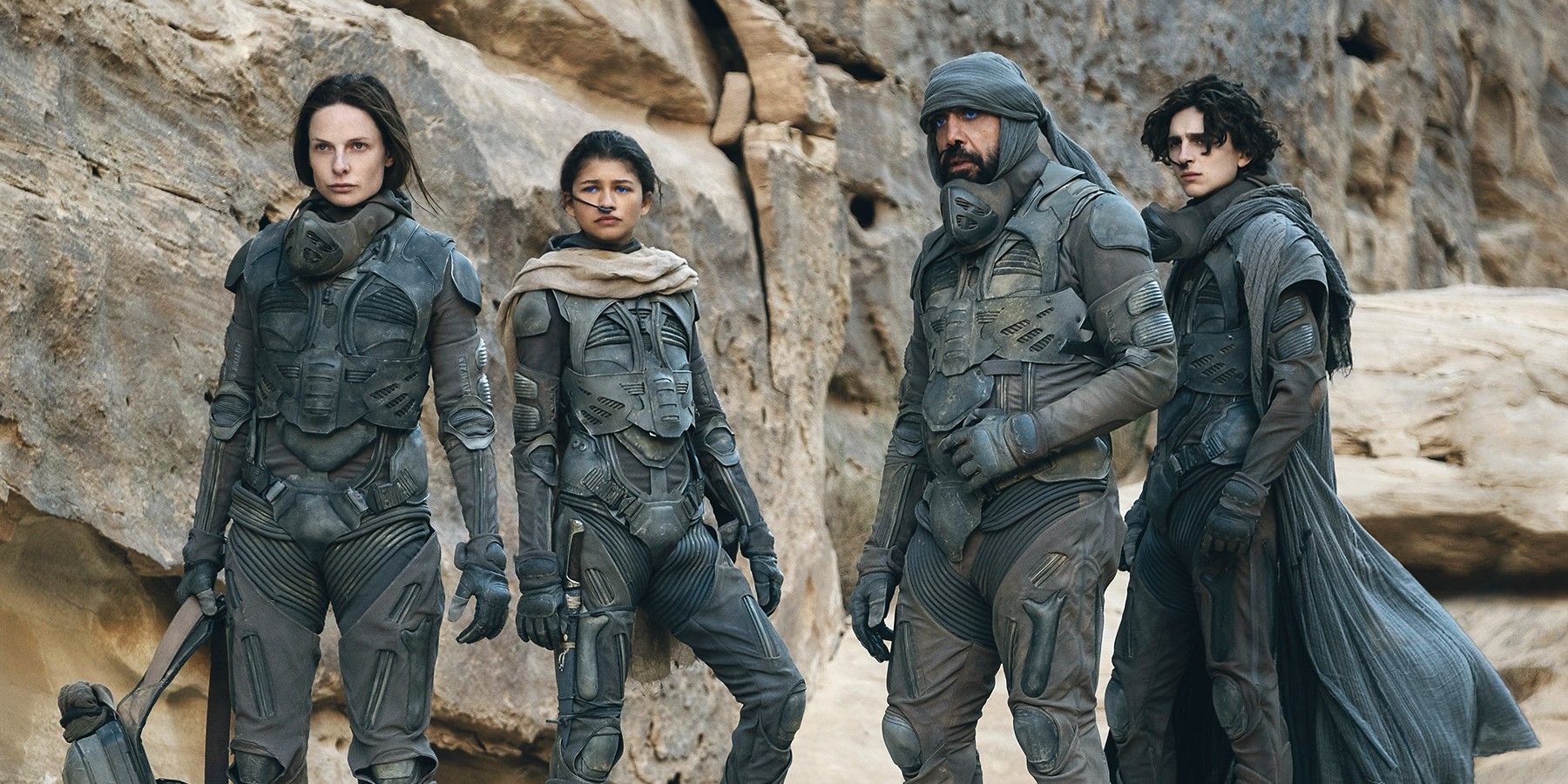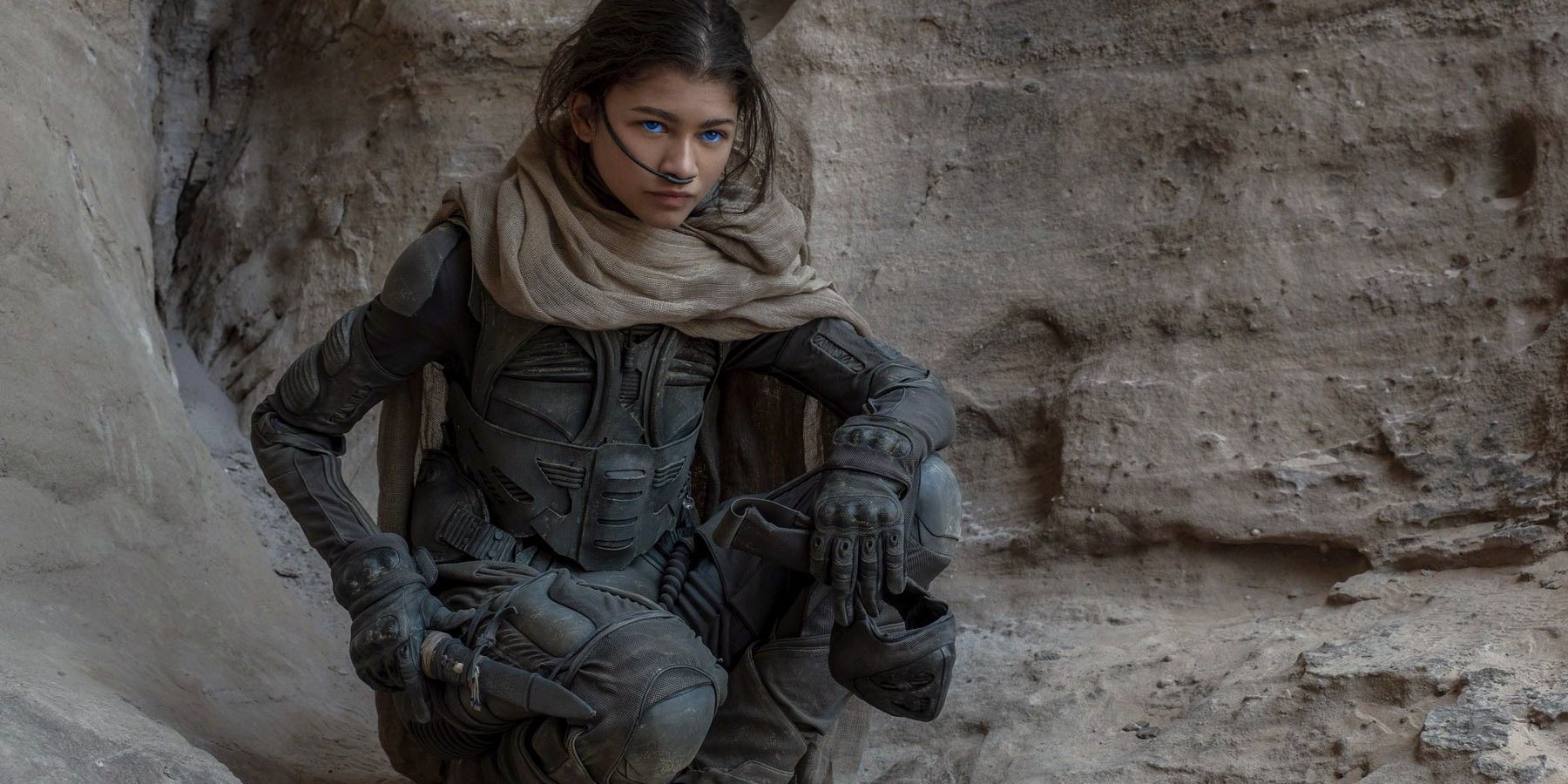Costume designers Jacqueline West and Bob Morgan explain how they came up with the look for the Arrakis stillsuit in Denis Villeneuve's Dune. It might've taken longer to arrive than expected, but last year's adaptation of Dune proved to be well worth the wait. The film, a major passion project of Villeneuve's, arrived in theaters and on HBO Max in October. With positive reviews and a star-studded cast led by Timothée Chalamet and Oscar Isaac to back it up, Dune did what few Warner Bros. movies were able to do in 2021 and earned over $107 million domestically ($397.05 million worldwide).
Villeneuve is hardly the first to attempt adapting Frank Herbert's iconic novel, but he is definitely the most successful. The Oscar-nominated director turned heads when he announced he would be splitting Dune into two parts; some wondered if it would be a costly gamble, considering audiences' recent reactions to more cerebral sci-fi films. Nevertheless, Villeneuve's split narrative won out in the end, as mere days after Dune premiered, Warner Bros. officially greenlit the second film. Dune: Part 2 will arrive in theaters in October 2023.
Now that Dune has been watched and rewatched by devoted fans, much of the attention has been placed on just how the film came to life. Speaking recently to Vanity Fair, costume designers Jacqueline West and Bob Morgan broke down how they developed the stillsuits the citizens of Arrakis wear as protection from the planet's harsh elements. The stillsuit is notable because it repurposes sweat and urine to make water for its wearers to drink. Villeneuve wanted them to look real and not like spacesuits, so it then became a hybrid design - Herbert's technology with a medieval design. West explained:
“We melded together different kinds of netting, cotton, microfibers, wicking fabrics, and silk. You could imagine that all of the tubing would go through the different layers and cool the body.”
Morgan then explained a key piece of the stillsuit, adding, "There are water catchers on the sleeves and on the thighs and chambers that look as though they could be believably pushing water around." Ultimately, the designers treated Dune as an "epic adventure, but one that takes place in the distant future, in a distant place with different technologies." It's safe to say that impression came through loud and clear in both the costumes and the overall production design of the film. One thing Villeneuve has received immense praise for is Dune's production values through his practical sets and inventive designs. Herbert's world is an epic one, and visualizing it for the big screen is a daunting task. Luckily, Villeneuve had been dreaming of a Dune movie for years, meaning he already had his approach in mind.
Because of Villeneuve's involvement, Dune was singled out early on as a potential awards contender. That still seems to hold true as the Oscar nominations approach, especially when it comes to the technical categories. In hearing about the creation of Dune's costumes from the designers themselves, it's clear a lot of work was put into each element of the film, and that should be honored somehow. A sci-fi movie lives or dies on how its world is brought to life, and Dune is one of the best examples of worldbuilding out there.
Source: Vanity Fair



